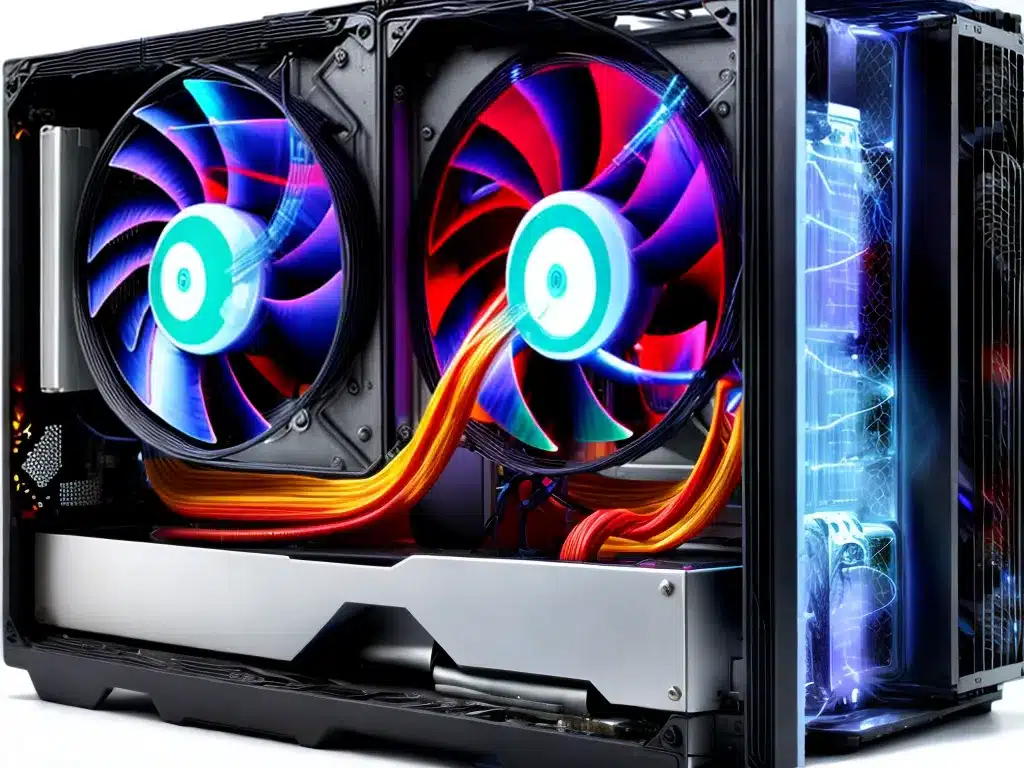Introduction
Keeping your PC cool is critical to maintaining performance and longevity. Overheating can cause system crashes, component failures, and permanent damage. Monitoring your computer’s temperatures regularly allows you to identify cooling issues before they become problematic. In this guide, I’ll walk you through several methods to check your PC’s temperature and evaluate the effectiveness of your cooling system.
Check Temperatures in BIOS
The BIOS (Basic Input/Output System) is the best place to get accurate temperature readings for your CPU and motherboard. Here’s how to check it:
-
Restart your computer and press the BIOS key – Usually Delete, F1, F2 or F12 depending on your system. This will open the BIOS menu.
-
Navigate to the PC Health Status or Hardware Monitor page – The layout varies between manufacturers but look for options related to system temperatures or hardware monitoring.
-
Note the temperatures – Look for CPU, motherboard and GPU temperature readings if available. Compare these to your processor’s max safe temperature.
-
Enable CPU fan speed control if possible – Some BIOS let you set fan speed profiles based on temperature. This can improve cooling performance.
Checking temperatures in BIOS provides the most accurate baseline readings for your system. However, it only gives you a snapshot at boot time. To monitor ongoing temperatures, you’ll need to use software solutions.
Use Monitoring Software
Software utilities can track and log temperatures in real-time, providing greater insight into cooling performance. Here are some good options:
-
Core Temp – Lightweight app that focuses specifically on CPU core temps and utilization.
-
HWMonitor – Gives temperatures for CPU, GPU, motherboard and hard drives.
-
Open Hardware Monitor – Open source app that displays all sensor information from components.
-
MSI Afterburner – Designed for GPUs but shows CPU temperatures as well.
When testing with a monitoring utility:
-
Check temperatures at idle and under load to identify issues.
-
Look for any components approaching or exceeding the maximum safe temperature.
-
Ensure CPU and GPU fans are ramping up properly when temperatures increase.
Perform Stress Testing
You can simulate high load conditions by stress testing your CPU and GPU using dedicated tools. This will heat up your computer quickly so you can see how your cooling responds. Some recommended stress testing software:
-
Prime95 – CPU stress testing and temperature monitoring.
-
AIDA64 – Stability testing and hardware diagnostics including temperatures.
-
Furmark – Intensive GPU stress test with temperature logging.
When stress testing:
-
Monitor temperatures closely to watch for overheating.
-
Abort testing if CPU or GPU exceeds 90°C.
-
Check clock speeds to ensure thermal throttling isn’t kicking in.
-
Confirm fan speeds are increasing properly during high loads.
Stress testing will push your cooling system to its limits, helping to identify any potential flaws.
Improve Cooling Performance
If you find temperatures are too high, here are some steps to improve cooling:
-
Clean dust buildup – Regularly clean dust from CPU/GPU fans and heatsinks for optimal airflow.
-
Re-apply thermal paste – Removing and re-applying high quality thermal paste can significantly lower CPU/GPU temps.
-
Upgrade CPU cooler – Consider an aftermarket air cooler or all-in-one liquid cooler for better performance.
-
Add case fans – Strategically placing intake and exhaust fans can drastically improve case airflow and cooling.
-
Improve case airflow – Ensure vents and fan mounts are unobstructed and cables tidy for smooth airflow.
-
Undervolt CPU/GPU – Lowering voltages can reduce temperatures with minimal performance impact.
With some adjustments, you can achieve temperature decreases of 10-20°C, allowing your PC to run cooler and minimize the risk of thermal issues.
Conclusion
Regularly monitoring your PC’s temperatures enables you to stay ahead of cooling problems and maintain optimal system performance. Use BIOS readings and software tools to check for issues, perform stress testing to see how your system responds under heavy loads, and take steps to improve cooling if needed. With the right temperature management, your components will run reliably at peak speeds for years to come.













